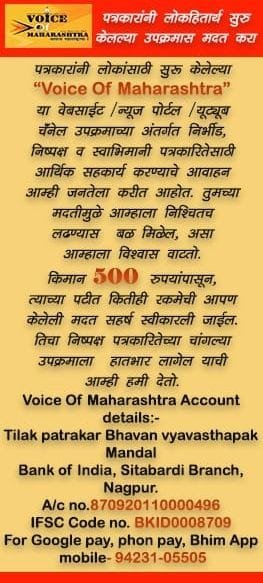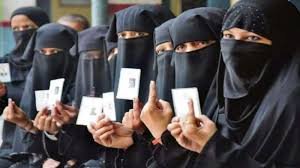
Bihar Assembly 2025: 'Kingmaker' influence of Muslim voters? Statistics and political strategies revealed
Patna, October 15, 2025 (Loksatta Special Correspondent): The controversial issue of 'Muslim factor' is once again gaining momentum on the political scene of Bihar. Will the influence of Muslim voters be decisive in the Bihar Assembly elections (2025) to be held next year? This question has arisen before all political parties at present. Representing about 17 percent of the state's population - who number approximately 2.5 crore - can become 'kingmakers' in many assembly constituencies. According to Loksatta's visual storytelling analysis, the possibility of a reversal of the results cannot be ruled out in the 68 assembly constituencies where the proportion of Muslim voters is more than 15 percent. This issue is based on historical voting patterns, district-wise distribution and the strategies of current political alliances. So, let's discuss this 'Muslim factor' in depth.
Muslim voter proportion: What do the statistics say?
Out of the total 7.6 crore voters in Bihar, Muslim voters constitute a large number of 2.5 crore. Their voting percentage in the 2020 assembly elections was 58-60 per cent, which is higher than the state average (55 per cent). According to Loksatta infographics, out of the 243 assembly constituencies in the state, 45 constituencies have a Muslim voter turnout of more than 25 per cent. This means that the results in these constituencies can be decided by a margin of only 5-10 per cent votes, where the 'block vote' of Muslim voters is decisive.
If we look at the district-wise distribution, the Seemanchal belt in the north-east has the highest Muslim voter turnout. For example:
Kishanganj: 68 per cent Muslim voters (as per the 2023 voter list).
Katihar: 43 per cent.
Purnia: 39 per cent.
Araria: 42 per cent.
Supaul: 25 per cent.
There are 20-25 assembly seats in these districts where Muslim voters are in majority or near majority. This influence is also seen in districts like Sitamarhi (18 per cent), Darbhanga (15 per cent) and Madhubani (20 per cent) in the Mithila region. Muslim voters have a strong influence in urban areas in western Bihar, while in central and southern Patna (10-12 per cent), Gaya (8 per cent) and Bhagalpur (17 per cent) are Muslim-dominated. According to an interactive map, 15-20 seats in Seemanchal, 10 seats in Tirhut and 8 seats in Magadh are Muslim-dominated. These figures make it clear that Muslim voters are not just numbers, they can change the political equation.
Historical Voting Pattern: Journey from RJD to Grand Alliance
The voting pattern of Muslim voters is a mirror of Bihar politics. If we look at the timeline from the 1990s:
1995-2005: The Rashtriya Janata Dal (RJD) led by Lalu Prasad Yadav was winning the trust of Muslim voters. In Seemanchal, RJD got support from over 80 percent of the Muslim votes. Muslim voters saw RJD as a 'shield' against the rise of BJP.
2005-2010: Voter divide after Lalu's decline. Some Muslim voters switched to Congress or Janata Dal (United). In 2005 elections, NDA (JDU-BJP) won due to Muslim unity, while in 2010, RJD's Muslim vote share dropped to 20 percent.
2015-2020: On the back of anti-BJP sentiment, the grand alliance (RJD-Congress) benefited from 70-75 percent of the Muslim votes. In 2015, the grand alliance won 178 seats, of which Muslim voters had a large share. In 2020, even after the NDA's victory, Muslim voters supported the grand alliance in 40 seats with 65 percent support, which led to stunning reversals in seats like Kishanganj and Araria. According to the CSDS-Lokmiti survey, "Muslim voters have been voting against the BJP since 2014, and in the 2019 Lok Sabha elections, 85 percent of Muslim voters were against the BJP."
Election analyst Yogendra Yadav says, "According to historical data, where Muslim voters are more than 20 percent, the opposition alliance benefits. The victory of the grand alliance in 2015 was possible only because of the Muslim factor." This pattern shows that Muslim voters are not just emotional, they vote strategically.
Current political alliances and strategies: The race to convince Muslim voters
Political parties are changing their strategies to convince Muslim voters in the 2025 elections. The grand alliance (RJD-Congress) has a strategy based on the 'MY' (Muslim-Yadav) arithmetic. RJD's Tejashwi Yadav is presenting himself as a young and Muslim leader. He is promising education quotas and welfare schemes. For 2025, they are planning to field Muslim candidates in 25 seats in Seemanchal, to ensure 90 per cent Muslim support. Tejashwi says, "We will give justice to all sections of society, especially those who have been historically marginalised."
On the other hand, the NDA (BJP-JDU) strategy is based on 'inclusivity'. The BJP had fielded 5-7 Muslim candidates in 2020 and campaigned on the issue of development in Seemanchal. JDU's Nitish Kumar is banking on a 'secular' image and is forming alliances with smaller Muslim parties (like AIMIM). He is targeting 10 per cent Muslim votes to woo the West Bengal Muslim (backward Muslim) voters. In 2020, the NDA got 15-20 per cent Muslim votes in urban areas (like Patna). However, the entry of AIMIM in Seemanchal could create vote splitting, which will benefit the NDA.
According to the 2023 caste census data, 73 per cent Muslims
Patna, October 15, 2025 (Loksatta Special Correspondent): The controversial issue of 'Muslim factor' is once again gaining momentum on the political scene of Bihar. Will the influence of Muslim voters be decisive in the Bihar Assembly elections (2025) to be held next year? This question has arisen before all political parties at present. Representing about 17 percent of the state's population - who number approximately 2.5 crore - can become 'kingmakers' in many assembly constituencies. According to Loksatta's visual storytelling analysis, the possibility of a reversal of the results cannot be ruled out in the 68 assembly constituencies where the proportion of Muslim voters is more than 15 percent. This issue is based on historical voting patterns, district-wise distribution and the strategies of current political alliances. So, let's discuss this 'Muslim factor' in depth.
Muslim voter proportion: What do the statistics say?
Out of the total 7.6 crore voters in Bihar, Muslim voters constitute a large number of 2.5 crore. Their voting percentage in the 2020 assembly elections was 58-60 per cent, which is higher than the state average (55 per cent). According to Loksatta infographics, out of the 243 assembly constituencies in the state, 45 constituencies have a Muslim voter turnout of more than 25 per cent. This means that the results in these constituencies can be decided by a margin of only 5-10 per cent votes, where the 'block vote' of Muslim voters is decisive.
If we look at the district-wise distribution, the Seemanchal belt in the north-east has the highest Muslim voter turnout. For example:
Kishanganj: 68 per cent Muslim voters (as per the 2023 voter list).
Katihar: 43 per cent.
Purnia: 39 per cent.
Araria: 42 per cent.
Supaul: 25 per cent.
There are 20-25 assembly seats in these districts where Muslim voters are in majority or near majority. This influence is also seen in districts like Sitamarhi (18 per cent), Darbhanga (15 per cent) and Madhubani (20 per cent) in the Mithila region. Muslim voters have a strong influence in urban areas in western Bihar, while in central and southern Patna (10-12 per cent), Gaya (8 per cent) and Bhagalpur (17 per cent) are Muslim-dominated. According to an interactive map, 15-20 seats in Seemanchal, 10 seats in Tirhut and 8 seats in Magadh are Muslim-dominated. These figures make it clear that Muslim voters are not just numbers, they can change the political equation.
Historical Voting Pattern: Journey from RJD to Grand Alliance
The voting pattern of Muslim voters is a mirror of Bihar politics. If we look at the timeline from the 1990s:
1995-2005: The Rashtriya Janata Dal (RJD) led by Lalu Prasad Yadav was winning the trust of Muslim voters. In Seemanchal, RJD got support from over 80 percent of the Muslim votes. Muslim voters saw RJD as a 'shield' against the rise of BJP.
2005-2010: Voter divide after Lalu's decline. Some Muslim voters switched to Congress or Janata Dal (United). In 2005 elections, NDA (JDU-BJP) won due to Muslim unity, while in 2010, RJD's Muslim vote share dropped to 20 percent.
2015-2020: On the back of anti-BJP sentiment, the grand alliance (RJD-Congress) benefited from 70-75 percent of the Muslim votes. In 2015, the grand alliance won 178 seats, of which Muslim voters had a large share. In 2020, even after the NDA's victory, Muslim voters supported the grand alliance in 40 seats with 65 percent support, which led to stunning reversals in seats like Kishanganj and Araria. According to the CSDS-Lokmiti survey, "Muslim voters have been voting against the BJP since 2014, and in the 2019 Lok Sabha elections, 85 percent of Muslim voters were against the BJP."
Election analyst Yogendra Yadav says, "According to historical data, where Muslim voters are more than 20 percent, the opposition alliance benefits. The victory of the grand alliance in 2015 was possible only because of the Muslim factor." This pattern shows that Muslim voters are not just emotional, they vote strategically.
Current political alliances and strategies: The race to convince Muslim voters
Political parties are changing their strategies to convince Muslim voters in the 2025 elections. The grand alliance (RJD-Congress) has a strategy based on the 'MY' (Muslim-Yadav) arithmetic. RJD's Tejashwi Yadav is presenting himself as a young and Muslim leader. He is promising education quotas and welfare schemes. For 2025, they are planning to field Muslim candidates in 25 seats in Seemanchal, to ensure 90 per cent Muslim support. Tejashwi says, "We will give justice to all sections of society, especially those who have been historically marginalised."
On the other hand, the NDA (BJP-JDU) strategy is based on 'inclusivity'. The BJP had fielded 5-7 Muslim candidates in 2020 and campaigned on the issue of development in Seemanchal. JDU's Nitish Kumar is banking on a 'secular' image and is forming alliances with smaller Muslim parties (like AIMIM). He is targeting 10 per cent Muslim votes to woo the West Bengal Muslim (backward Muslim) voters. In 2020, the NDA got 15-20 per cent Muslim votes in urban areas (like Patna). However, the entry of AIMIM in Seemanchal could create vote splitting, which will benefit the NDA.
According to the 2023 caste census data, 73 per cent Muslims
Muslim voter proportion: What do the statistics say?
Out of the total 7.6 crore voters in Bihar, Muslim voters constitute a large number of 2.5 crore. Their voting percentage in the 2020 assembly elections was 58-60 per cent, which is higher than the state average (55 per cent). According to Loksatta infographics, out of the 243 assembly constituencies in the state, 45 constituencies have a Muslim voter turnout of more than 25 per cent. This means that the results in these constituencies can be decided by a margin of only 5-10 per cent votes, where the 'block vote' of Muslim voters is decisive.
If we look at the district-wise distribution, the Seemanchal belt in the north-east has the highest Muslim voter turnout. For example:
Kishanganj: 68 per cent Muslim voters (as per the 2023 voter list).
Katihar: 43 per cent.
Purnia: 39 per cent.
Araria: 42 per cent.
Supaul: 25 per cent.
There are 20-25 assembly seats in these districts where Muslim voters are in majority or near majority. This influence is also seen in districts like Sitamarhi (18 per cent), Darbhanga (15 per cent) and Madhubani (20 per cent) in the Mithila region. Muslim voters have a strong influence in urban areas in western Bihar, while in central and southern Patna (10-12 per cent), Gaya (8 per cent) and Bhagalpur (17 per cent) are Muslim-dominated. According to an interactive map, 15-20 seats in Seemanchal, 10 seats in Tirhut and 8 seats in Magadh are Muslim-dominated. These figures make it clear that Muslim voters are not just numbers, they can change the political equation.
Historical Voting Pattern: Journey from RJD to Grand Alliance
The voting pattern of Muslim voters is a mirror of Bihar politics. If we look at the timeline from the 1990s:
1995-2005: The Rashtriya Janata Dal (RJD) led by Lalu Prasad Yadav was winning the trust of Muslim voters. In Seemanchal, RJD got support from over 80 percent of the Muslim votes. Muslim voters saw RJD as a 'shield' against the rise of BJP.
2005-2010: Voter divide after Lalu's decline. Some Muslim voters switched to Congress or Janata Dal (United). In 2005 elections, NDA (JDU-BJP) won due to Muslim unity, while in 2010, RJD's Muslim vote share dropped to 20 percent.
2015-2020: On the back of anti-BJP sentiment, the grand alliance (RJD-Congress) benefited from 70-75 percent of the Muslim votes. In 2015, the grand alliance won 178 seats, of which Muslim voters had a large share. In 2020, even after the NDA's victory, Muslim voters supported the grand alliance in 40 seats with 65 percent support, which led to stunning reversals in seats like Kishanganj and Araria. According to the CSDS-Lokmiti survey, "Muslim voters have been voting against the BJP since 2014, and in the 2019 Lok Sabha elections, 85 percent of Muslim voters were against the BJP."
Election analyst Yogendra Yadav says, "According to historical data, where Muslim voters are more than 20 percent, the opposition alliance benefits. The victory of the grand alliance in 2015 was possible only because of the Muslim factor." This pattern shows that Muslim voters are not just emotional, they vote strategically.
Current political alliances and strategies: The race to convince Muslim voters
Political parties are changing their strategies to convince Muslim voters in the 2025 elections. The grand alliance (RJD-Congress) has a strategy based on the 'MY' (Muslim-Yadav) arithmetic. RJD's Tejashwi Yadav is presenting himself as a young and Muslim leader. He is promising education quotas and welfare schemes. For 2025, they are planning to field Muslim candidates in 25 seats in Seemanchal, to ensure 90 per cent Muslim support. Tejashwi says, "We will give justice to all sections of society, especially those who have been historically marginalised."
On the other hand, the NDA (BJP-JDU) strategy is based on 'inclusivity'. The BJP had fielded 5-7 Muslim candidates in 2020 and campaigned on the issue of development in Seemanchal. JDU's Nitish Kumar is banking on a 'secular' image and is forming alliances with smaller Muslim parties (like AIMIM). He is targeting 10 per cent Muslim votes to woo the West Bengal Muslim (backward Muslim) voters. In 2020, the NDA got 15-20 per cent Muslim votes in urban areas (like Patna). However, the entry of AIMIM in Seemanchal could create vote splitting, which will benefit the NDA.
According to the 2023 caste census data, 73 per cent Muslims

.jpg)






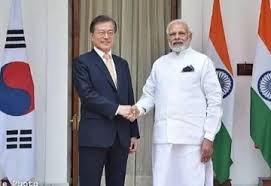
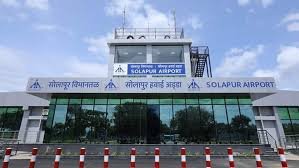
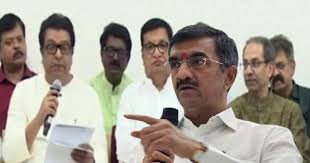
.png)
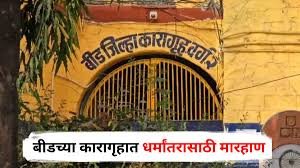
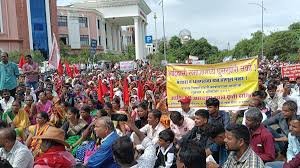
.png)
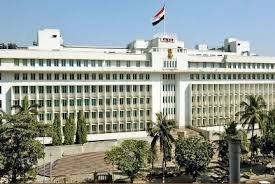
.png)
.png)
